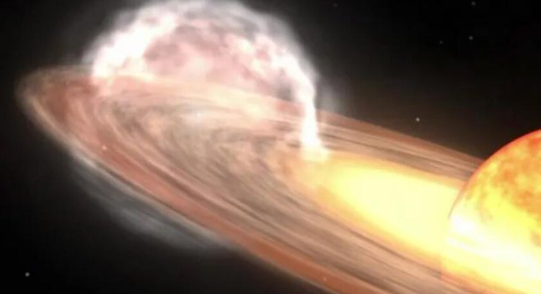Astronomers worldwide are eagerly awaiting a spectacular nova explosion that will make a star, known as the “Blaze star,” shine as brightly as the North Star. This event, visible to the naked eye, is a result of a small, dense star siphoning hydrogen from a nearby neighbor for 80 years, leading to an explosion with a brightness a hundred thousand times that of the sun.
How often do you get to watch a star explode? https://t.co/tsluk3LhJn
— The Obsolete Man (@DocYeargin) July 29, 2024
Amateur astronomers and observatories, both on Earth and in space, are gearing up to witness this cosmic event. To stay updated on the exact timing, enthusiasts can follow NASA Universe on X (formerly Twitter) or sign up for instant alerts from the Astronomer’s Telegram.
The explosion is expected to occur between now and the end of the year, likely before the end of August. Once the Blaze star goes nova, it will reach its peak brightness on the first night after the explosion, giving viewers only a few days to spot it.
To locate the star, find the Big Dipper and follow its handle in the direction before it curves downward to locate the Corona Borealis constellation, which appears in a tight “U” shape. The Blaze star will be just outside the bottom left of this “U.”
Witness a Once-in-a-Lifetime Celestial Event: T Coronae Borealis Set to Erupt!
Astronomers and space enthusiasts are eagerly awaiting a spectacular event in the night sky: the impending nova explosion of T Coronae Borealis (T CrB), also known as the “Blaze Star.” This rare… pic.twitter.com/W2a73sQQ66
— impulsif (@impulsifX) July 26, 2024
Alternatively, websites and apps like Stellarium can help pinpoint the star’s location by entering your coordinates and searching for T Coronae Borealis (T CrB). Practicing spotting the Corona Borealis constellation before the event can enhance your experience, allowing you to better appreciate the changes in the night sky.
Key Points:
i. Anticipated Nova Explosion: The “Blaze star” is expected to go nova, becoming as bright as the North Star and visible to the naked eye.
ii. Event Timing: The explosion could happen anytime between now and the end of the year, likely before the end of August.
iii. Visibility: The star will be brightest on the first night after the explosion, providing a short window for viewing.
iv. Finding the Star: Locate the Big Dipper, then follow its handle to the Corona Borealis constellation. The nova will appear just outside the “U” shape on the bottom left.
v. Additional Resources: Use websites or apps like Stellarium to locate the star, listed as T Coronae Borealis (T CrB). Practice spotting the constellation to enhance your experience.
Susan Guglielmo – Reprinted with permission of Whatfinger News



